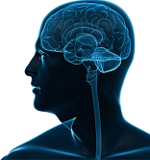“Unprecedented breakthrough” offers potential for recovery from paralysis
Scientists announce dramatic research where epidural stimulation offers potential for recovery from paralysis following spinal cord injury
Nearly six million Americans are living with paralysis, including 1.275 million spinal cord injuries. Most have been told that no recovery is possible and that complete paralysis is permanent. This belief was fundamentally challenged with the announcement on April 8, 2014 by international team of scientists at the University of Louisville, UCLA and the Pavlov Institute of Physiology, that four young men who had been paralyzed for years were able to voluntarily move their hips, ankles and toes following the implantation of an epidural electrical stimulator. These results were published in journal Brain.
This research is being funded by the Reeve Foundation’s NeuroRecovery Network, the National Institutes of Health and other public and private organizations.
The research builds on an initial study, published in the May 2011 edition of The Lancet, which evaluated the effects of epidural stimulation in the first participant, who recovered a number of motor functions as a result of the intervention. What is remarkable about this more recent work is that the second, third and fourth participants were able to execute voluntary movements immediately following the implantation and activation of the stimulator.
Epidural stimulation involves the application of continuous electrical current at varying frequencies and intensities to specific locations on the lumbosacral spinal cord, corresponding to the dense neural bundles that largely control movement of the hips, knees, ankles and toes. The stimulation mimics signals the brain normally transmits to initiate movement. Over the course of the study, the researchers noted that the participants were able to achieve movements with less stimulation, demonstrating the ability of the spinal network to learn and improve nerve functions.
The language used in the Brain article is more dramatic than commonly seen is an academic journal, demonstrating the significance of this discovery;
“We have uncovered a fundamentally new intervention strategy,” the authors report, “ that can dramatically affect the recovery of voluntary movement in individuals with complete paralysis even years after injury.”
This news is clearly cause for celebration!

